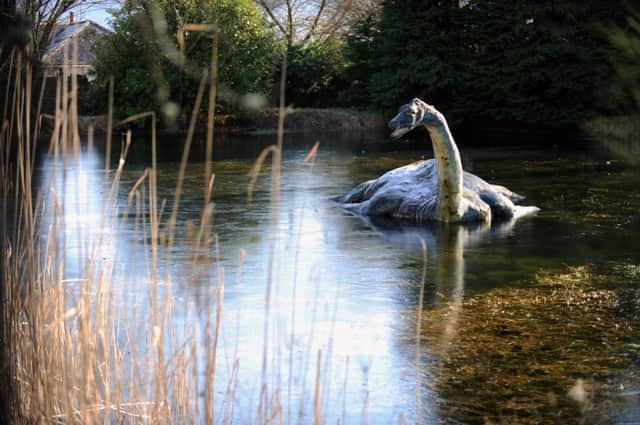London museum planned to ‘shoot and steal Nessie’


Newly discovered documents have revealed how the National History Museum (NHM) in London appealed to so-called bounty hunters to help secure the carcase of the Loch Ness monster, according to a new book.
It claims the files, dating back to the 1930s, show staff at the institution were keen to steal a march on museums in Scotland and around the world by exhibiting all – or part – of the beast’s remains.
Advertisement
Hide AdAdvertisement
Hide AdAlthough Nessie now occupies a prized place in Scottish mythology alongside flying haggis and Brigadoon, the correspondence from the museum’s archives demonstrate the seriousness with which early rumours of her existence were treated.
In 1934, a year after the first sightings of a supposedly mysterious creature lurking in the loch’s depths, the book claims, an NHM employee made clear it would be keen to trump institutions such as Edinburgh’s Royal Scottish Museum (RSM).
In a letter dated March of that year, the unnamed official responded to questions about the museum’s policy on Nessie. The message was black and white.
“Should you ever come within range of the ‘Monster’ I hope you will not be deterred by humanitarian considerations from shooting him on the spot and sending the carcase to us in cold storage, carriage forward,” the letter stated, before adding: “Short of this, a flipper, a jaw or a tooth would be very welcome.”
The remarkable advice is detailed in Britain’s X-traordinary Files, a book examining various myths and stories in the country’s folklore.
Author David Clarke said while researchers already knew about similar files at the RSM, the discovery of similar documents at the NHM left him “astonished”.
He said: “Many influential people – including MPs and famous naturalists like Sir Peter Scott – believed in the existence of Nessie and a lot of pressure was placed on the Scottish Office to give it special protection.
“During the 1930s, the monster became an important symbol for Scottish Nationalists who wanted the police to protect the creature from big game hunters.
Advertisement
Hide AdAdvertisement
Hide Ad“Nessie had become a Scottish icon – a symbol of national identity.”
He added: “There was genuine outrage at the possibility that the corpse of the monster might be taken for display in London.”
While the NHM was working behind the scenes to secure the creature, the RSM warned against the prospect of Nessie being put on display south of the Border.
In a 1934 letter to the then secretary of state for Scotland, Sir Godfrey Collins, the museum staked Edinburgh’s claim to the carcase.
It stated: “The museum urges strongly that the RSM have the reversionary rights to the ‘Monster’ if and when its corpse should become available.
“We think the Monster should not be allowed to find its last resting place in England.
“Such a fate would surely outrage Scottish nationalism which at the moment is thriving greatly under the Monster’s beneficent influence.”
The Scotland Office opened a file on the monster in December 1933 in Edinburgh after being bombarded with inquiries from the press.
Advertisement
Hide AdAdvertisement
Hide AdAccording to more files found in Edinburgh, pressure was already growing for a special act of parliament to prevent Nessie being killed or captured.
The campaign was led by Inverness MP Murdoch MacDonald who assured Sir Godfrey the creature was no myth.
“Evidence of its presence can be taken as undoubted. Far too many people have seen something abnormal to question its existence,” he wrote.
He demanded a bill be put before parliament to protect the creature and asked Sir Godfrey what could be done to spare it from harm in the meantime.
Sir Godfrey was advised there was “no law for the protection of Monsters” and “great fish, including those of no known denomination, may be claimed by The Crown”.
In later decades, the NHM’s appetite for all matters Nessie waned considerably. The archives show that in October 1959, it wrote to employees warning them the trustees “do not approve of the spending of official time or official leave on the so-called Loch Ness phenomena”.